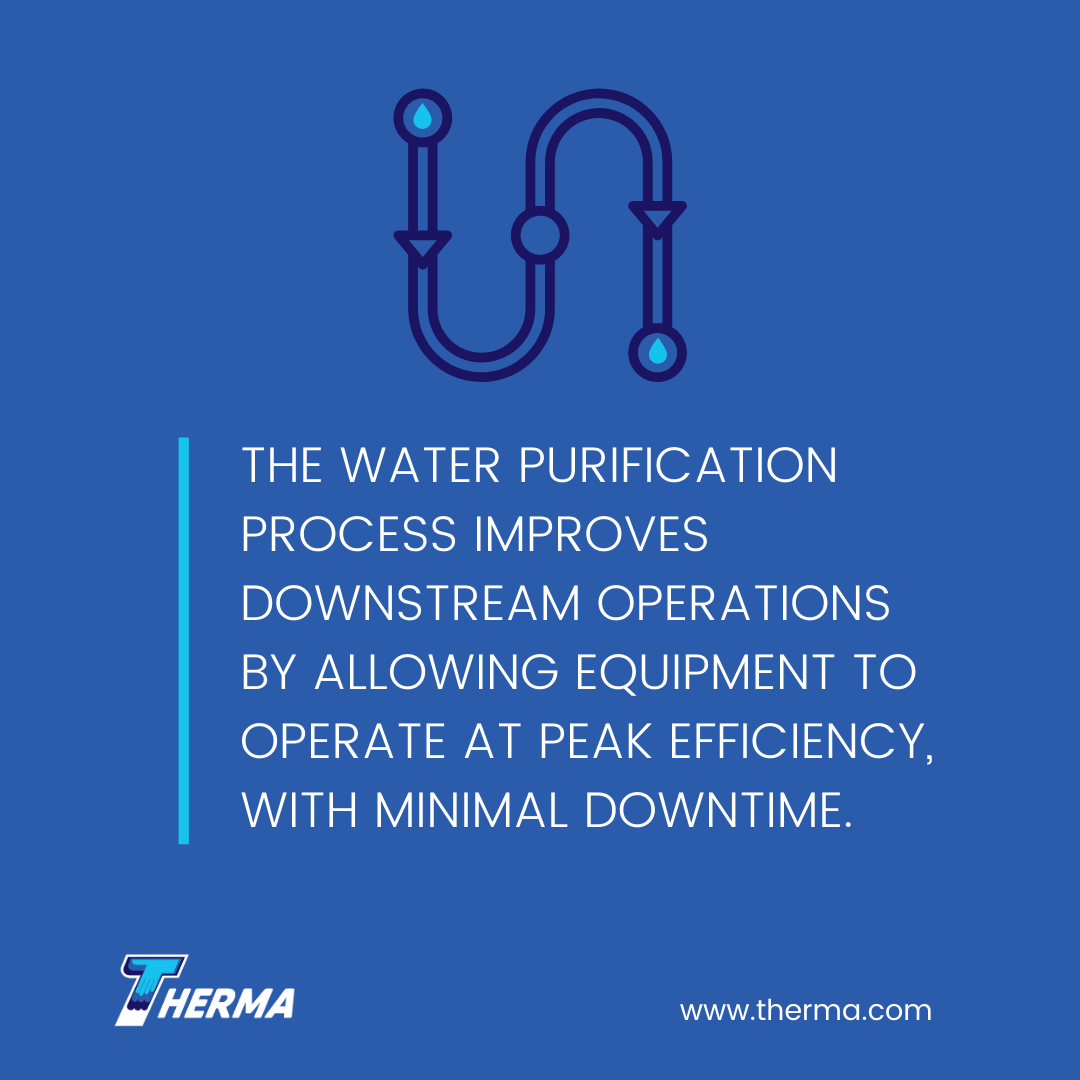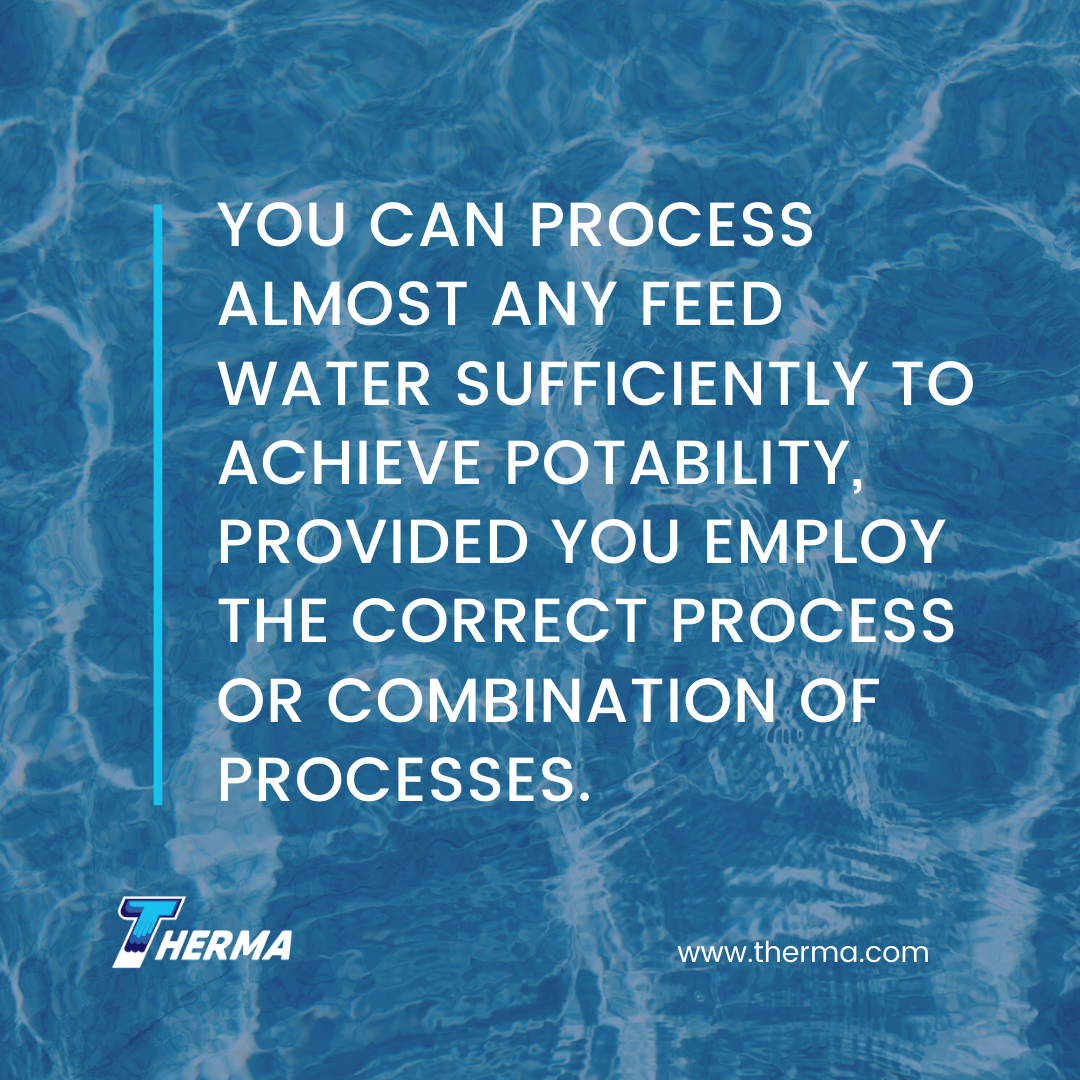Water purification removes contaminants that can interfere with manufacturing processes, or leave evaporative residue on equipment. Purified water is in demand for many applications, including medical, pharmaceutical and beverage verticals.
Water purification can be required at many different levels and for many different purposes. You can process almost any feed water sufficiently to achieve portability, provided you employ the correct process or combination of processes.
Two of the most effective of these methods for water purification are reverse osmosis (RO) and deionization (DI). Deionized water is used in lead-acid batteries to prevent erosion of the cells and reverse osmosis can render brackish water usable in industrial verticals.
Reverse osmosis and deionization are often used together to create a two-step RO/DI process to purify water entering a manufacturing system.
Reverse Osmosis
Developed initially to process saltwater into water suitable for drinking, reverse osmosis is now habitually used in industrial settings. Industrial RO is being used to remove various suspended solids, microbiologics and trace metals from water intended for either a heating or cooling capacity.
Industrial RO systems use pressurized containers fitted with a semi-permeable membrane. Water is pressed through the membrane, which blocks impurities. The pressure required to run the RO process can be reverted back to the industrial plant, providing a way to reuse the power.
Deionization
Industrial DI systems produce water that is equal to distilled water in purity, without the lengthy–and costly–process of distillation. Deionization can remove fully dissolved solids and salts from water bypassing the contaminated water through positive and negative resins.
- Anionic resins consist of positively charged ammonium groups, precharged with the hydroxide ions to attract negatively charged ions like chloride, fluoride and sulfate; these release an equal amount of hydroxide.
- Cationic resins consist of negatively charged sulfonic groups, precharged with hydrogen ions to attract positively charged ions like magnesium, calcium and sodium; these release an equal amount of hydrogen.
The hydroxide and hydrogen interact to form water. However, deionization may leave microbiologics behind, which is why pairing the process with reverse osmosis is an ideal solution.
Benefits of RO/DI
RO/DI industrial processes are used as part of a “pre-treatment” step to help remove pollutants from feed water before it enters a manufacturing system.
Heating
When water is used in a boiler for a heating application, soluble materials can collect on surfaces causing buildup and blockages. By using water that has been purified using an RO/DI set of processes, pollutants can be minimized. Efficiency will be improved, equipment will last longer reducing the amount of man-hours attributed to cleaning and descaling.
Cooling
When water is used in evaporative or condensate cooling, the same concerns with buildup and decreased effectiveness of the system exist. RO/DI can ensure the water being utilized for cooling applications is purified to provide the highest level of efficiency and minimize maintenance costs.

Environmental
The environmental advantages of water purification using RO/DI are many and can help industrial and manufacturing companies achieve compliance with regulations concerning wastewater.
The water purification process improves downstream operations by allowing equipment to operate at peak efficiency, with minimal downtime and significantly reduced blowdown from boiler applications.
In some cases, RO/DI can enable the reclaiming and recycling of effluent-borne materials, providing a way for companies to recover high-value by-products that can be reused or sold.
In others, these processes can permit water to be diverted back into a purification system for pollutant removal and reuse, reducing raw water costs for many thermal applications and allowing Zero Liquid Discharge (ZLD) goals to be met.
Finally, RO/DI can reduce the risk of waterborne illness as part of a comprehensive water-management plan designed to reduce the presence of bacteria in cooling towers and other building water systems.
Implementing RO/DI processes can provide a wide range of environmental and commercial benefits. To learn more about water purification options, reach out to Therma today.








